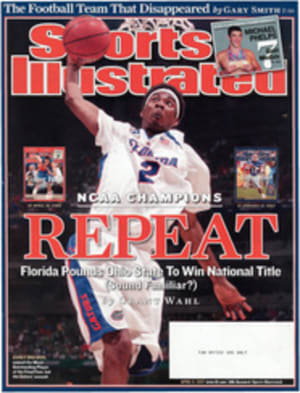
Gorgeous George
LONG BEFORE he played himself in 1942's The Pride of the Yankees, Babe Ruth made his big screen debut in 1920's Headin' Home. The Bambino played Babe, a slugger with some not-so-Ruthian traits: He's neither a drinker nor a womanizer. "Babe wasn't much on that Hearts an' Flowers stuff," the title cards in the silent film explain. "His heart was willin' but his tongue wuz on a strike." He's also quite trim.
Headin' Home is one of two features and 11 shorts on the two-disc DVD set Reel Baseball, 1899--1926: Baseball Films from the Silent Era, several of which have been seen only by film buffs trolling the Library of Congress's archives. Headin' Home is hokey and predictable, but it's a kick seeing the 25-year-old Sultan of Swat—who was in his first season with the Yankees—rescue his little sister's dog from the pound and, later, the banker's daughter from the clutches of a slick charmer.
John McGraw also makes an appearance, in 18 minutes taken from the 1917 feature One Touch of Nature, playing—what else?—the manager of the New York Giants. The saga of a young Yalie whose father disapproves of the woman he's courting, Nature here is winnowed down to scenes at the ballpark, when the young player shows his stuff to both Dad and a supportive McGraw.
The better films—those that are not just vehicles for their athlete actors—feature now-forgotten stars of the era playing for broad comedy. In 1914's Hearts and Diamonds, John Bunny (who made nearly 200 silents before his death in 1915) plays the Widower Tupper, a corpulent capitalist with designs on the town dowager. When it turns out she fancies men in baseball uniforms, he cobbles together a team of misfits (one player has to be shown the way to first base), which leads to some amusing slapstick.
Small-town American values prevail in Reel Baseball. These are, after all, the days before million-dollar signing bonuses and steroid controversies. But even back then baseball had its dark side. His Last Game—made in 1909, a decade before the Black Sox scandal—features a Choctaw Indian player who refuses money to throw the game, gets into a brawl, kills a gambler and is executed, but not before leading his team to a championship. It's a lot of plot and action, not to mention melodrama, for 12 minutes, but therein lies the fun.
Click This
IT'S THE guiltiest of pleasures, a truly terrible song we can't help listening to this time of year. It's One Shining Moment, and CBS has been using it as the music for its NCAA tournament highlights wrap up since 1987. Most of the montages can be found on YouTube, but the best is arguably the first. Aired after Indiana beat Syracuse, the '87 edition features Keith Smart's title-winning, buzzer-beating jumper. Bonus points for shots of Bob Knight memorably attacking a phone, Jerry Tarkanian's Sipowicz-esque short-sleeved-shirt-and-tie combos and the awful perms on the crying cheerleaders.
Book Watch
WHY DO we gamble? The better question, according to SI senior writer Richard Hoffer, is why wouldn't we? Risk taking, he says, is ingrained in America's DNA, and in Jackpot Nation: Rambling and Gambling Across Our Landscape of Luck, Hoffer examines the breadth and depth of our gaming obsession. From $500 tables in Vegas to a Minnesota bar where winners walk off with a side of bacon, Hoffer takes readers on a richly researched ride through the $80 billion gambling subculture. This is no detached social history. A gambler himself, Hoffer writes eloquently about the highs and lows of the betting life.
PHOTO
COURTESY KINO INTERNATIONAL (RUTH)
A STAR IS BORN Shortly after becoming a Yankee, a slenderish Ruth made his film debut.
PHOTO
COURTESY KINO INTERNATIONAL (DVD)
PHOTO
RICH CLARKSON/NCAA PHOTOS (SMART)
PHOTO
APPLE/GETTY IMAGES (LAPTOP)
PHOTO
MEL LEVINE (BOOK)

